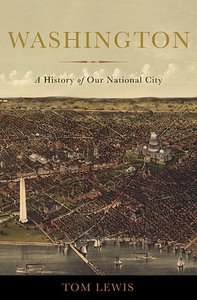Take a photo of a barcode or cover
It took me a full two months to finish this book. That should tell you everything you need to know.
I didn't grow up in the District but I've lived and worked in the area for a good 10 years in aggregate now -- about a third of my life. Nobody takes great pains to teach the history of the city, so mostly what you get is accumulated political history since the beginning of Home Rule. All of which is generally embodied in the person of Marion Barry.
But the capital is of course quite a bit older, which is where this book steps in to fill the gap. From the first surveys of a capital on this bog along the Potomac to the construction of the Metro, you get a little bit from nearly every period in D.C.'s history. Some years get a whole heck of a lot more pages. Indeed, the modern era barely seemed to get any at all.
One gets the impression after learning about it in its totality that D.C. isn't actually just one place. It's been many different kinds of cities -- from an unfinished Southern backwater, to an unfinished target of insurrection by bodies foreign and domestic, to several versions of a swollen militarized capital, to its modern form as a slightly stunted modern city. As a resident today, it doesn't even really feel like the 1 million-resident-strong city during WWII could have shared the same streets.
It's possible that the fragmentation I felt was due to the writing. This book is extraordinarily dry, and broken up into a myriad of tiny fragments that only vaguely come together into a coherent collage. The masters of nonfiction are able to figure out how to weave long threads of story together into a coherent narrative, but Tom Lewis is unfortunately not among them.
I do feel as though I learned a lot about my city, but I remain skeptical about how much I'm going to retain. If you can't tie facts to emotions, then a work isn't going to stick with you. And so I doubt this one will.
I didn't grow up in the District but I've lived and worked in the area for a good 10 years in aggregate now -- about a third of my life. Nobody takes great pains to teach the history of the city, so mostly what you get is accumulated political history since the beginning of Home Rule. All of which is generally embodied in the person of Marion Barry.
But the capital is of course quite a bit older, which is where this book steps in to fill the gap. From the first surveys of a capital on this bog along the Potomac to the construction of the Metro, you get a little bit from nearly every period in D.C.'s history. Some years get a whole heck of a lot more pages. Indeed, the modern era barely seemed to get any at all.
One gets the impression after learning about it in its totality that D.C. isn't actually just one place. It's been many different kinds of cities -- from an unfinished Southern backwater, to an unfinished target of insurrection by bodies foreign and domestic, to several versions of a swollen militarized capital, to its modern form as a slightly stunted modern city. As a resident today, it doesn't even really feel like the 1 million-resident-strong city during WWII could have shared the same streets.
It's possible that the fragmentation I felt was due to the writing. This book is extraordinarily dry, and broken up into a myriad of tiny fragments that only vaguely come together into a coherent collage. The masters of nonfiction are able to figure out how to weave long threads of story together into a coherent narrative, but Tom Lewis is unfortunately not among them.
I do feel as though I learned a lot about my city, but I remain skeptical about how much I'm going to retain. If you can't tie facts to emotions, then a work isn't going to stick with you. And so I doubt this one will.
Chock full of interesting information about my hometown (yes, I was born in D.C.). Just fascinating, and makes it possible to understand so much about decisions made that shaped the district. Highly recommend this if you have any interest in the actual nation's capital, rather than the seat of the Federal Government.
The cover of this book is very misleading. It is not in fact a credulous dad history hagiography of the capital! It is rather a myth-dispelling, racially honest, and deeply ambivalent recounting of this weird, weird city. By that I mean it's excellent. We have a vision of the national mall as timeless, of l'Enfant's plan having been carried out to the letter in the late 1700s, but it didn't happen like that all! The mall as we know it only really looked like them when they took down the last tempos after WWII. Also great stuff about uptown and the black history of Washington, treated with great candor.
adventurous
informative
inspiring
fast-paced
informative
slow-paced
I was torn between three and four stars, but one lie, either out of ignorance or more I suspect out of deliberation, and one doozy of an error that an English prof shouldn't have made, gets it three stars.
The lie? The claim that Woodrow Wilson was nothing other than a passive pawn to his Cabinet in the segregation of Washington. Wilson's racism is actually well known.
The error? Claiming Harding invented "normalcy." The word actually goes back before the Civil War.
There is a lot good about the history of the city, but errors like this will get you dinged.
The lie? The claim that Woodrow Wilson was nothing other than a passive pawn to his Cabinet in the segregation of Washington. Wilson's racism is actually well known.
The error? Claiming Harding invented "normalcy." The word actually goes back before the Civil War.
There is a lot good about the history of the city, but errors like this will get you dinged.


